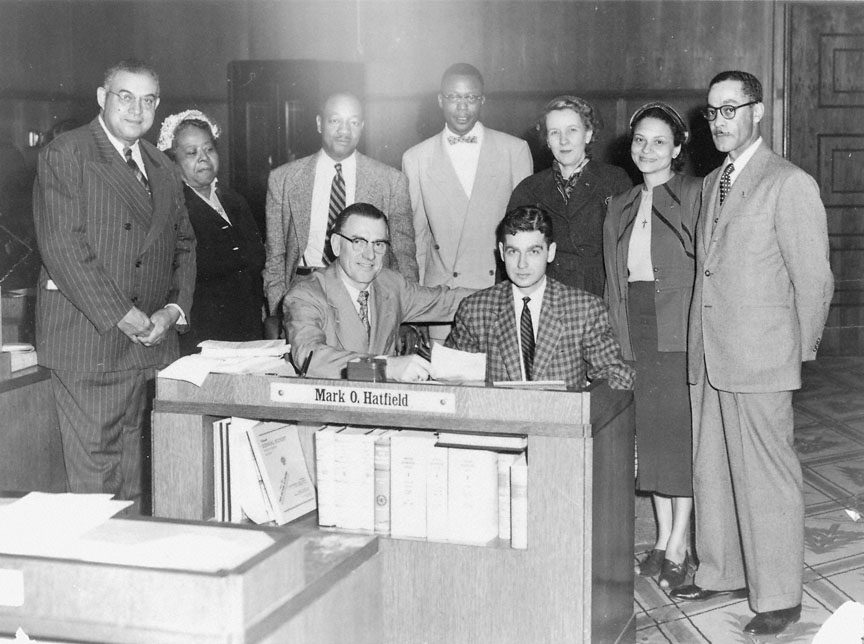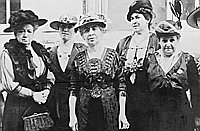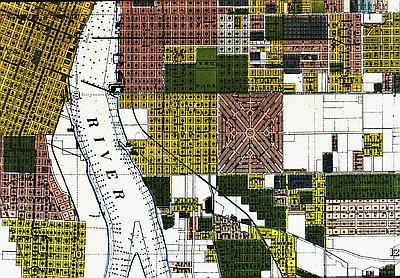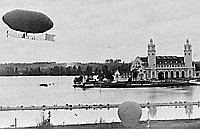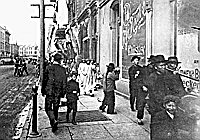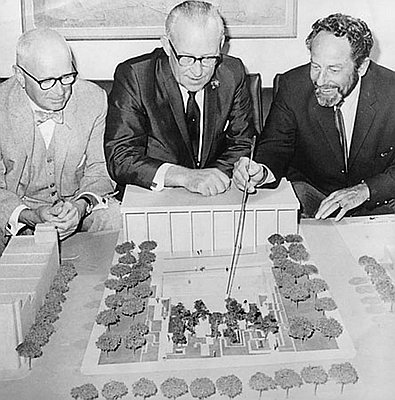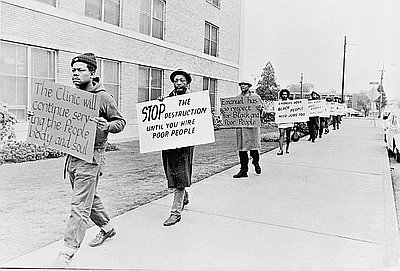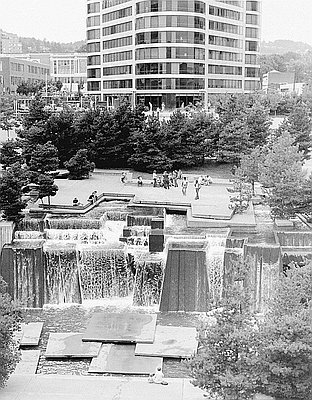By the mid-1960s, opposition to what planners called “urban renewal”— the demolition of deteriorating mixed-use districts to make way for freeways and large public buildings—spread from very large cities like Chicago, Detroit, and Philadelphia to smaller ones like Portland. Since most of these districts were inhabited by African Americans, Black ministers and professionals found themselves in the vanguard of neighborhood resistance to central planning. Because their numbers were so small, resistance by Portland’s Blacks to the destruction of their neighborhood had few immediate results. But Black neighborhood organizations of the 1960s provided an example to white middle-income neighborhoods which in the 1970s would also be threatened by freeway expansion.
Between 1956 and the early 1970s a series of massive construction projects decimated the Albina district. In 1956 voters approved bonds to build the Memorial Coliseum, which was located on the oldest portion of the neighborhood. In the 1960s the interstate highway to Seattle was routed away from downtown Portland to the east bank of the Willamette River through central Albina. In the 1970s Emanuel Hospital expanded to absorb still more housing, and construction began on the Fremont Bridge. Its ramps to Interstate 5 shredded the southern end of Albina, pushing still more Black families to the northeast.
At the same time, social dislocations experienced by Black youth around the country appeared in Albina. Unemployment rose despite the immense public-sector construction projects, and militant groups like the Student Non-violent Coordinating Committee and the Black Panther Party of Oakland held rallies at places like Irving Park. By 1967 the FBI had surveillance in the neighborhood, arson occurred, and the police intervened at rallies to make arrests. To provide new sources of recreation, the city in 1969 responded to local ministers and women from the Albina Neighborhood Improvement Committee by creating a park named for DeNorval Unthank about a quarter of a mile from the freeway construction. At an impressive ceremony attended by Ira Keller and other officers of the Portland Development Commission, Unthank expressed gratitude for the honor. But three weeks later a violent demonstration at a drive-in at Northeast Union and Shaver Streets led to many arrests and further hostility between the neighborhood’s young people and the police.
As violence subsided, a new generation of college-educated Black leaders became absorbed in various federal anti-poverty programs. Neighborhoods like Irvington, which had become racially integrated in the mid-1960s, already had community leaders who used their contacts with city officials to obtain federal funds to plant trees, get additional street lights, repair sidewalks, and extend parks and playgrounds. The activists built a sense of communal spirit that could be carried over to resist centrally mandated urban renewal projects. In 1973, when the Fremont Bridge was opened, community protests temporarily blocked access ramps that would have emptied traffic into narrow Albina and Irvington streets.
By the mid-1970s, Black professionals working at the Albina Action Center on Knott Street, a few blocks from the Irvington School, reported that the neighborhood still suffered from social debilities endemic to inner city neighborhoods: high population density, low income, unemployment, and high crime rates. Some had been trained in federal anti-poverty projects and found permanent jobs with the city or county, while many small businesses had been started. In addition, local ministers reported that Black residents no longer felt isolated from other Portlanders. As former Albina residents bought homes in predominantly white neighborhoods they apparently met no resistance. But as late as 1996, African Americans were still 70 percent of two census tracts along Martin Luther King Boulevard and were over 50 percent of the population in four adjoining tracts.
There was also a small but growing number of Native Americans in the city. During World War II a few thousand Native Americans had come to Portland to find work, and federal programs resettled many more during the 1950s. Between 1940 and 1970, the Native population in the city grew from 2,000 to about 8,000. By 1959, a number of people working for the Bureau of Indian Affairs formed the Portland American Indian Center to nurture and support Native cultures. By 1969, PAIC members held Portland’s first powwow, which became a satellite event of the Rose Festival the following year. The emphasis on group cohesiveness and pride also led Portland’s Native community to renew contacts with reservations. At urban powwows, individuals used resources from the reservations for ceremonial events and personal healings.
Young activists applied for federal funds to start new programs. By 1975, Portland’s Indian Council was administering a budget provided by the federal Office of Economic Opportunity (OEO) of over $1.5 million. At the same time, OEO money was funneled to the reservations, revitalizing cultural life as well as initiating similar social services there.
© William Toll, 2003. Updated and revised by OHP staff, 2014.
